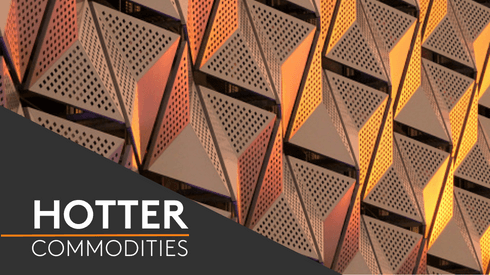This was skewed, however, by losses of around 0.6% in aluminium, nickel and zinc. Copper was off by 0.1% at $6,894 per tonne.
Volume on the LME has been average with 5,183 lots traded as at 07.02 am London time.
This follows a strong performance on Monday when the complex closed with average gains of 1%, led by a 3.4% rise in lead prices.
Gold and silver prices were both down by 0.2% this morning, with spot gold prices at $1,290.84 per oz, while platinum prices have rebounded by 0.2% and palladium prices were little changed. This follows scant movement for gold on Monday, while the more industrial precious metals climbed between 0.5% for silver and 2.9% for palladium.
In China, lead prices on the Shanghai Futures Exchange were up by 2.2%, copper and tin prices were up by 0.4% and 0.5% respectively, with the former at 51,470 yuan ($8,058) per tonne, while aluminium, zinc and nickel prices were off by around 0.3%.
Spot copper prices in Changjiang were up by 0.1% at 51,190-51,330 yuan per tonne and the LME/Shanghai copper arbitrage ratio has slipped to 7.46, from 7.50 on Monday.
In other metals in China, iron ore prices were down by 3% at 454 yuan per tonne on the Dalian Commodity Exchange. On the SHFE, steel rebar prices were down by 0.8%, while gold and silver prices were up by 0.1% and 0.3% respectively.
In wider markets, spot Brent crude oil prices were little changed at $79.42 per barrel this morning. The yield on US 10-year treasuries remains firm at 3.0550%. Meanwhile, the German 10-year bund yield has eased to 0.5270%.
Equity markets in Asia were weaker on Tuesday: Nikkei (-0.19%), Hang Seng (closed), Kospi (closed), CSI 300 (-0.92%) and the ASX 200 (-0.7%). This follows a mixed performance in western markets on Monday, where in the United States the Dow Jones closed up by 1.21% at 25,013.29, and in Europe where the Euro Stoxx 50 closed down by 0.03% at 3,572.57.
The dollar index at 93.62 is consolidating Monday’s gains that saw the index climb to a high of 94.06. On the charts there is likely to be resistance between 94.22 and 95.15.
The euro’s slide has paused for now at 1.1772, sterling remains weak at 1.3417, as does the yen at 111.06, while the Australian dollar is firmer at 0.7588.
The yuan at 6.3739 is consolidating and the emerging market currencies we follow are also consolidating after recent weakness.
Today’s data releases included Japan’s core consumer price (CPI) that climbed 0.5%, which was down from 0.7% previously. Later there is data on UK inflation, public sector borrowing and industrial order expectations, there is a German Bundesbank monthly report, data on China’s leading indicators and the United States’ Richmond manufacturing index. In addition, UK Monetary Policy Committee (MPC) member Gertjan Vlieghe is speaking.
The base metals are for the most part giving back some of the gains they made on Monday, so rangebound trading continues. Nickel and lead seem to be the two metals with most direction, with the latter supported after the arbitrage window into China opened. The strong dollar is likely to remain a headwind, but the market as a whole does seem to be waiting for direction. For now economic data generally shows growth but not strong growth, so we expect more sideways trading.
Gold prices have found support above $1,280 per oz, with underlying tails on the candlestick charts suggesting dip-buying. The fact gold prices have suffered in recent weeks when geopolitical tensions have at times been high, highlights that it is the strong dollar and upward trending US treasury yields that are the main drivers of gold prices. For now, the path of least resistance looks set to remain to the downside. Silver prices are holding up better than gold prices, as are palladium prices, while platinum prices also ran into dip-buying on Monday.





